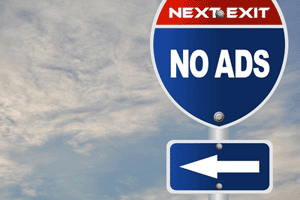The number of online ads blocked this year was up almost 50% versus year ago. That trend is likely to accelerate now that Apple has introduced a new operating system that supports ad blocking.
Currently, 15% of US adults have ad blocking software on their computer. 41% of smartphone owners say they are very likely to install an ad blocker on their mobile, now that one is readily available.
Technologically sophisticated, younger Americans who consume lots of content are the most likely to block online advertising. Those with above average incomes and men tend to block ads more than other demographics.
The #1 reason why consumers block ads is because they fear their personal data is being misused in marketing. Mobile blocking is also driven by concerns that ads slow load times and consume precious data.
Globally, gaming and social media sites lose the most ads to blocking. In the US, lifestyle and news sites are also being impacted.
Entrepreneurs’ reaction to this trend is to happily start more ad blocking companies. Marketers who rely on digital advertising and publishers who survive via online ad revenue are quite a bit less thrilled.
What are the implications for your business?
- How should you evolve your marketing as ad blocking inevitably grows?
- Should content marketing — which tends to be less blockable — play a bigger role in your marketing plans?
For help developing powerful digital strategies that work, compelling marketing strategies that drive results, strategic plans that deliver growth, or new products that consumers love, contact Brandology at 925-417-2253 or Maura@Brandology.com.
Sources: Adobe 2015, Comscore 2015,Marketing Charts 2015, Research Industry Voices 2015

 So please…You’re creative. That’s why you considered the name “Brandology.” Use those creative juices to come up with another name that’s not already trademarked. Even though it will take some time, it will be fun, happy time — a stunning contrast to the time you’ll spend with Brandon if you try to use “Brandology.” Really. (It’s probably a little tacky to mention, but if you want our help naming your business, that’s something we do too.)
So please…You’re creative. That’s why you considered the name “Brandology.” Use those creative juices to come up with another name that’s not already trademarked. Even though it will take some time, it will be fun, happy time — a stunning contrast to the time you’ll spend with Brandon if you try to use “Brandology.” Really. (It’s probably a little tacky to mention, but if you want our help naming your business, that’s something we do too.)